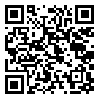BibTeX | RIS | EndNote | Medlars | ProCite | Reference Manager | RefWorks
Send citation to:
URL: http://ijeee.iust.ac.ir/article-1-839-en.html
A four port network adder-subtractor module, for surface plasmon polariton (SPP) waves based on a ring resonator filter is proposed. The functionality of module is achieved by the phase difference manipulation of guided SPPs through different arms connected to the ring resonator. The module is designed using the concepts of a basic two-port device proposed in this paper. It is shown that two port network eliminates odd, and transmits even SPP modes of a single source. Moreover, in the case of four-port adder (with two individual sources), it is elucidated that according to the location of each output port, one can achieve the consequent added or subtracted outputs, correspondingly. Two distinct peaks are observed in the transmission spectrum of adder and subtractor outputs, where increasing the individual source phase difference, leads to a red shift in the adder output, and a blue shift in the subtractor output peaks. The proposed module can be used as the building block for implementing arithmetic operations in plasmonic integrated circuits. The transmission line theory verifies the numerical simulation results, and demonstrates the functionality of the adder/subtractor module.
Received: 2015/09/29 | Revised: 2017/08/23 | Accepted: 2016/02/14
| Rights and permissions | |
 |
This work is licensed under a Creative Commons Attribution-NonCommercial 4.0 International License. |








